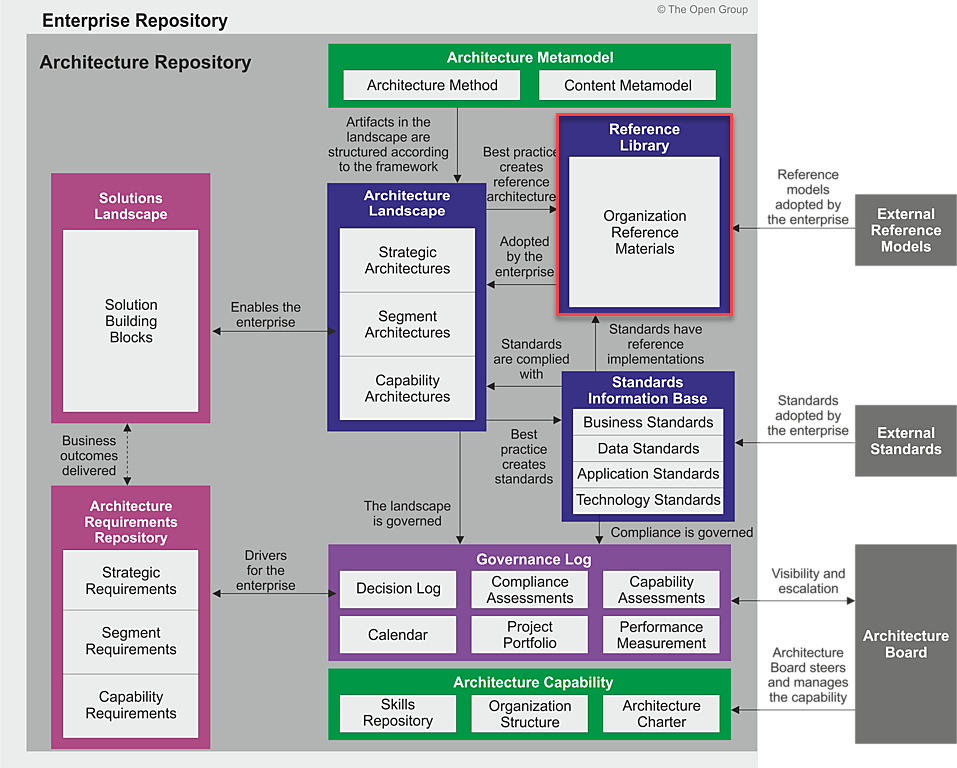Introduction
In the ever-evolving landscape of enterprise architecture, staying ahead of the curve is crucial for success. The Enterprise Reference Library emerges as a beacon, offering a treasure trove of guidelines, templates, patterns, and reference materials. This invaluable resource serves as a catalyst, propelling organizations towards the swift and efficient creation of innovative architectures.

Accelerating Creation
The cornerstone of the Reference Library lies in its ability to accelerate the creation of new architectures. Imagine having a toolkit at your disposal, carefully curated with tried-and-true guidelines. These guidelines act as a roadmap, providing clear directions for architects and developers, minimizing the guesswork and reducing development cycles.
Guidelines, the North Star
At the heart of the Reference Library are comprehensive guidelines that act as the North Star for architects. These guidelines cover a spectrum of architectural considerations, from design principles to security best practices. By adhering to these guidelines, enterprises can ensure consistency, reliability, and scalability in their architectures.
Templates: Building Blocks of Efficiency
Templates within the Reference Library serve as building blocks for architecture creation. These templates encapsulate industry best practices, enabling architects to kickstart their projects with a solid foundation. Whether it’s a data architecture template or a cloud infrastructure blueprint, these templates save time and effort while fostering adherence to organizational standards.
Patterns: Crafting with Precision
Patterns are the artistic strokes of enterprise architecture. The Reference Library is a repository of proven design patterns that encapsulate solutions to recurring problems. Architects can leverage these patterns to address specific challenges, promoting consistency and efficiency across different projects. From microservices architecture to event-driven systems, the Reference Library has it covered.
Reference Materials: A Wealth of Knowledge
In addition to guidelines, templates, and patterns, the Reference Library houses a wealth of reference materials. These materials serve as a knowledge base, offering insights into emerging technologies, industry trends, and case studies. Architects can tap into this repository to stay informed, ensuring that their architectures are not only efficient but also future-proof.
Collaboration and Knowledge Sharing
The Reference Library is not just a static repository; it fosters a culture of collaboration and knowledge sharing. Architects across teams can contribute their insights, adding to the richness of the library. This collaborative approach ensures that the Reference Library remains a dynamic and evolving resource, reflecting the collective wisdom of the organization.
Examples of Reference Library
Let’s break down the examples for each component of the Reference Library:
- Guidelines:
- Example: The Reference Library outlines guidelines for microservices architecture, emphasizing principles such as loose coupling, scalability, and independent deployability. Architects can follow these guidelines to ensure consistency and best practices when designing distributed systems.
- Templates:
- Example: Within the Reference Library, there’s a comprehensive cloud infrastructure template designed for AWS. This template includes pre-configured settings for security groups, load balancers, and auto-scaling groups. Architects can leverage this template to expedite the creation of a secure and scalable cloud environment for their applications.
- Patterns:
- Example: The Reference Library features a well-established event-driven architecture pattern. This pattern defines how events are produced, consumed, and processed in a distributed system. Architects can apply this pattern to design systems that respond to real-time events, fostering a more responsive and scalable architecture.
- Reference Materials:
- Example: The Reference Library contains a curated collection of whitepapers and case studies on blockchain technology. These reference materials provide in-depth insights into the practical applications of blockchain in different industries. Architects can leverage this knowledge to make informed decisions when integrating blockchain into their enterprise architectures.
By incorporating these examples into the Reference Library, architects and developers have a robust set of resources at their disposal, empowering them to create innovative and efficient enterprise architectures.
Conclusion
In the fast-paced world of enterprise architecture, innovation is the key to survival. The Enterprise Reference Library emerges as a powerful ally, providing the tools and guidance needed to accelerate the creation of robust architectures. By leveraging guidelines, templates, patterns, and reference materials, organizations can navigate the complexities of modern architecture with confidence, unlocking new possibilities and ensuring a competitive edge in the digital landscape.